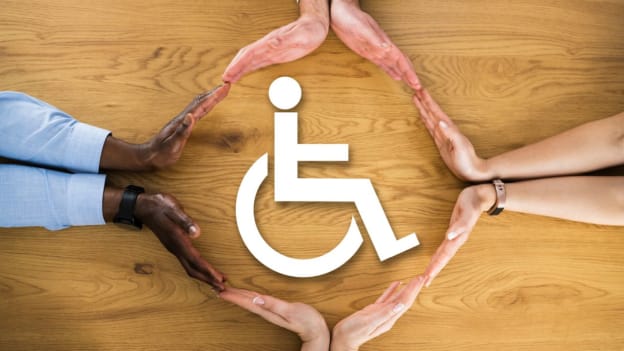'More than a gesture': What employing persons with disabilities actually entails

Many companies are starting to see the value of a diverse workforce, with Diversity and Inclusion (D&I) being an important criterion for an increasing number of firms during the recruitment process.
A diverse workplace brings about great benefits to organisations because differing perspectives can help better inform business decisions and improve the overall likelihood of success for the organisation.
Hiring persons with disabilities (PWDs) is becoming a part of D&I efforts.
People Matters spoke to Dipak Natali, Regional President and Managing Director of Special Olympics Asia Pacific - an NGO using sport, health, education and leadership programmes to end discrimination against and empower people with intellectual disabilities (PWIDs), on what organisations need to think for creating more inclusive hiring systems for PWDs and the benefits of an inclusive and diverse workforce.
Here are some edited excerpts.
Why are inclusive employment systems needed?
Being open and engaging PWIDs in the workplace demonstrates genuine commitment to diversity, which has potential to influence the wider hiring culture within an organisation.
For instance, take Florence Hui, one of our Special Olympics athletes, who is also a full-time staff at global retail brand Uniqlo. With a Work Skills Qualification (WSQ) certification in retail operations, Florence pursued a career in retail, where she continues to advocate for greater diversity and in the recruitment campaigns her workplace undertakes.
Individuals like Florence showcase how inclusion works, and that PWIDs have the potential to benefit greatly and contribute meaningfully to any organisation.
What are the challenges with disability-inclusive hiring? The opportunities?
One of the biggest challenges facing PWIDs is how under-represented they are in society.
Often, it is this under-representation that can breed misconceptions and prejudice about them in the workplace, labelling them unfairly as unreliable and incapable.
Of our 2.1 million athletes across SOAP, only a small handful are employed, proving that more must be done to help dispel the bias against them at work.
A UN study reported that the unemployment rates for people with disabilities as a whole (including PWIDs) across APAC is double that of the general population and can even hit as high as 80 per cent or more. Unfortunately, this means that many of them often do not enjoy equal opportunities in the workplace, and there is tendency to isolate PWIDs or keep them apart from mainstream society. Business leaders need to understand that by doing so, we are only contributing further to the stigmatisation.
Therefore, it’s important that misconceptions about PWIDs are addressed openly. Often, negative perceptions stem from a lack of understanding because little effort is made to understand these people. Being open to communicating with them will be the first step to eradicating the schism. Having authentic conversations in the workplace can bring people together and help us in overcoming our own blind spots when it comes to establishing inclusive hiring systems in the workplace.
What must organisations keep in mind when filling their inclusion quota?
There is great value in diversity. Hiring of PWIDs should not be viewed simply as a check in the box so that organisations can fulfil their inclusion quota. Leaders need to recognise that just like anyone else, PWIDs have the potential to contribute meaningfully to the workplace.
If given the opportunity to do so, they have proven to offer great skills and commitment to the organisation.
At SOAP, we find ways for our athletes to develop both their personal and professional skills, most prominently through our Athlete Leadership programme. This provides them with foundational skills that our athletes can take with them into the workplace.
The hope is that organisations view PWIDs beyond being a statistic to boost inclusion numbers and hire them instead because of their skill sets and ability to do the job well, regardless of their disability.
Diversity in the workplace does not equate to inclusion in the workforce, and to engage in meaningful employment, leaders need to recognise that it would require more than just hiring PWIDs. It would also mean changing existing policies and practices and investing time, energy and effort to better support an inclusive workforce.
How can we create a workplace that is accessible and welcoming to PWIDs?
Every PWID is different, and it would be difficult to dictate specifically how organisations can manage them. What I can say, however, based on observations on the playing field during Special Olympics training sessions, is how our coaches interact with PWIDs, which I find can be applied to the workplace as well.
When training our athletes with intellectual disabilities (ID), our coaches train them as they would any other player without disabilities. The technical training remains the same, only with our coaches tending to take more time with them and being more sensitive to their learning modes.
What does this mean for employers in the workplace? Similar to coaches on the playing field, employers should take additional steps to be more self-aware when interacting with PWIDs at work.
In addition, while employing PWIDs is the first step to creating an inclusive workplace, the work does not stop there. Organisations need to also take active steps to helping PWIDs feel comfortable in their work by ensuring that all employees across the board understand and stand behind the importance and need for a diverse workforce.
Implementing diversity training, for example, would be a great way to do so. Only when we start recognising and committing to hiring, training, and assimilating PWIDs into the workforce, will we start to see real and impactful progress.
















